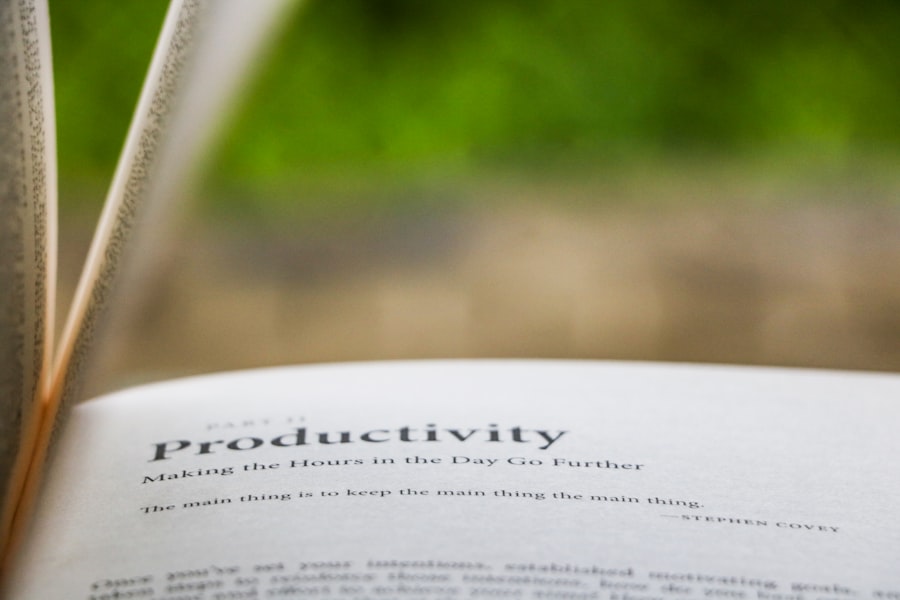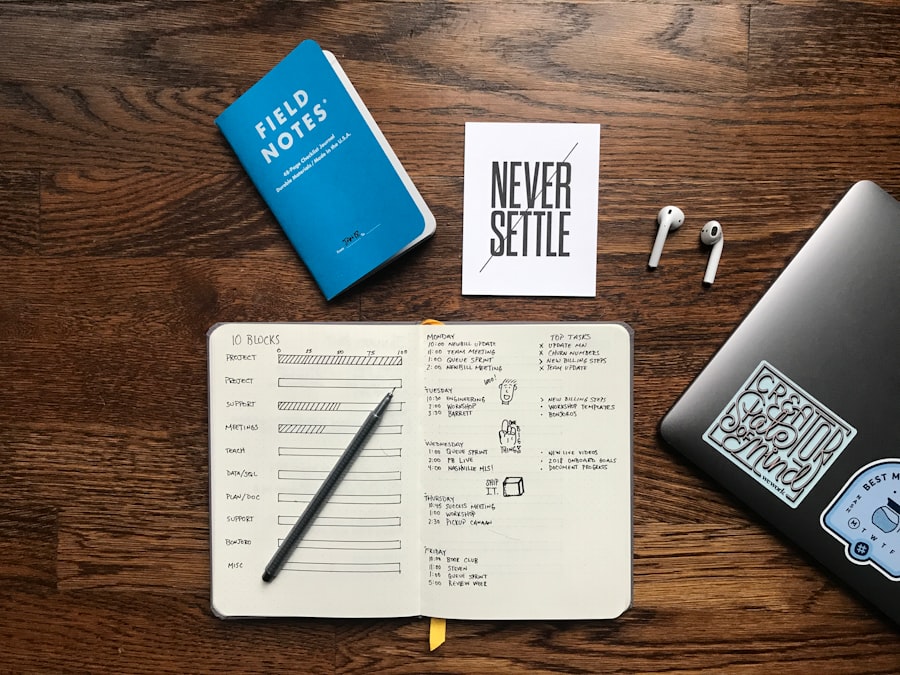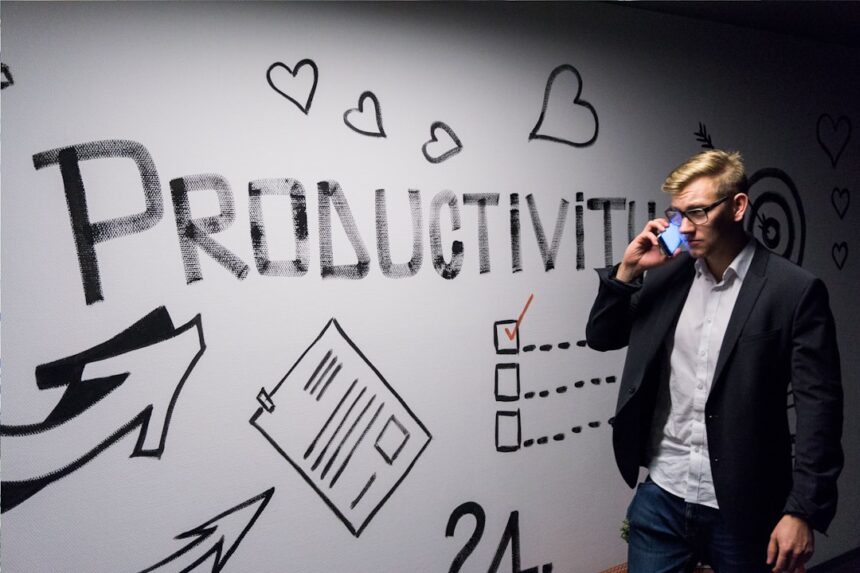To effectively address a slow work pace, it is essential to first understand the underlying causes that contribute to this issue. You may find that various factors, both internal and external, can hinder your productivity. For instance, personal issues such as stress, fatigue, or lack of motivation can significantly impact your ability to work efficiently.
When you feel overwhelmed or disengaged, it becomes increasingly difficult to maintain a steady work rhythm. Recognizing these emotional and psychological barriers is the first step toward overcoming them. Additionally, external factors such as an unorganized workspace or unclear instructions can also slow you down.
If your environment is cluttered or chaotic, it can be challenging to focus on the tasks at hand. Similarly, if you are unsure about what is expected of you, it can lead to hesitation and procrastination. By identifying these causes, you can take proactive steps to create a more conducive work environment and mindset that fosters productivity.
Key Takeaways
- Understanding the root causes of slow work pace is essential for addressing and improving productivity.
- Setting clear and attainable goals helps in providing direction and motivation for efficient work.
- Prioritizing tasks effectively ensures that important and urgent tasks are completed on time.
- Time management techniques such as the Pomodoro method can help in maximizing productivity and minimizing procrastination.
- Minimizing distractions, such as turning off notifications and creating a dedicated workspace, can significantly improve focus and efficiency.
Setting Clear and Attainable Goals
Once you have a grasp on the reasons behind your slow work pace, the next step is to set clear and attainable goals. Establishing specific objectives gives you a roadmap to follow, making it easier to stay focused and motivated. When you set goals, ensure they are SMART: Specific, Measurable, Achievable, Relevant, and Time-bound.
This framework helps you break down larger tasks into manageable steps, allowing you to track your progress and celebrate small victories along the way. Moreover, having well-defined goals can help you prioritize your tasks more effectively. When you know what you want to achieve, it becomes easier to allocate your time and resources accordingly.
You may find that setting daily or weekly goals not only enhances your productivity but also provides a sense of accomplishment that fuels your motivation. By regularly reviewing and adjusting your goals as needed, you can maintain a dynamic approach to your work that keeps you engaged and on track.
Prioritizing Tasks Effectively

Effective prioritization is crucial for overcoming a slow work pace. You may often feel overwhelmed by the sheer volume of tasks on your plate, leading to indecision and procrastination. To combat this, consider using techniques such as the Eisenhower Matrix, which categorizes tasks based on their urgency and importance.
By distinguishing between what needs immediate attention and what can wait, you can focus on high-priority tasks that drive your progress forward. Another useful method is the ABCD prioritization technique, where you label tasks as A (most important), B (important but not urgent), C (nice to do), or D (delegate or drop). This approach allows you to visualize your workload and make informed decisions about where to direct your energy.
As you prioritize effectively, you’ll likely notice an increase in your productivity levels, as you’re no longer bogged down by less critical tasks that consume valuable time and mental resources.
Time Management Techniques
| Technique | Description | Effectiveness |
|---|---|---|
| Pomodoro Technique | Work for 25 minutes, then take a 5-minute break | High |
| Eisenhower Matrix | Prioritize tasks based on urgency and importance | High |
| Time Blocking | Dedicate specific time blocks to different tasks | High |
| Eat That Frog | Tackle the most challenging task first thing in the morning | Medium |
| Getting Things Done (GTD) | Organize tasks into actionable items, projects, and categories | High |
Mastering time management techniques is essential for enhancing your work pace. One popular method is the Pomodoro Technique, which involves working in focused bursts of 25 minutes followed by a 5-minute break. This approach not only helps maintain concentration but also prevents burnout by allowing you to recharge regularly.
You may find that breaking your work into manageable intervals makes daunting tasks feel less overwhelming and more achievable. Another effective time management strategy is time blocking, where you allocate specific blocks of time for different tasks throughout your day. By scheduling your day in advance, you create a structured routine that minimizes decision fatigue and keeps you accountable.
You might also consider using digital tools or planners to help visualize your schedule and stay organized. As you implement these techniques, you’ll likely discover a newfound sense of control over your time, leading to increased productivity and a more satisfying work experience.
Minimizing Distractions
In today’s fast-paced world, distractions are everywhere, making it challenging to maintain a steady work pace. To combat this issue, it’s crucial to identify the specific distractions that affect you most. Whether it’s social media notifications, chatty coworkers, or even personal devices, recognizing these interruptions allows you to take proactive measures to minimize their impact.
You might consider creating a dedicated workspace that is free from distractions or using apps that block distracting websites during work hours. Additionally, establishing boundaries with colleagues can help reduce interruptions during your focused work periods. Communicate your need for uninterrupted time and encourage others to respect those boundaries.
You may also find it helpful to set specific times for checking emails or messages rather than allowing them to disrupt your workflow continuously. By taking these steps to minimize distractions, you’ll create an environment that fosters concentration and enhances your overall productivity.
Adopting a Healthy Work Environment

Creating a healthy work environment is vital for maintaining a steady work pace. Your physical surroundings can significantly influence your mood and productivity levels. Start by ensuring that your workspace is organized and clutter-free; this simple change can lead to improved focus and efficiency.
Consider personalizing your space with items that inspire you or bring you joy, such as plants or motivational quotes. Moreover, pay attention to factors such as lighting and ergonomics in your workspace. Natural light can boost your mood and energy levels, while an ergonomic chair can prevent discomfort during long hours of work.
You might also consider incorporating elements of wellness into your routine, such as standing desks or regular stretching breaks. By prioritizing a healthy work environment, you’ll create a space that supports both your physical well-being and productivity.
Utilizing Technology and Tools
In today’s digital age, leveraging technology can significantly enhance your work pace. There are countless tools available designed to streamline processes and improve efficiency. Project management software like Trello or Asana can help you organize tasks visually and collaborate with team members seamlessly.
By utilizing these tools, you can keep track of deadlines and responsibilities more effectively. Additionally, consider using productivity apps that help manage time and focus. Tools like Todoist or Focus@Will can assist in organizing tasks while providing features that promote concentration through music or ambient sounds.
Embracing technology not only simplifies your workflow but also allows you to harness the power of automation for repetitive tasks. As you integrate these tools into your routine, you’ll likely find yourself working more efficiently and effectively.
Taking Regular Breaks
While it may seem counterintuitive, taking regular breaks is essential for maintaining a steady work pace. Working for extended periods without rest can lead to burnout and decreased productivity over time. Instead of pushing through fatigue, allow yourself short breaks throughout the day to recharge mentally and physically.
You might find that stepping away from your desk for just a few minutes can refresh your mind and enhance focus when you return. Consider implementing techniques like the 52/17 rule—working for 52 minutes followed by a 17-minute break—to optimize your productivity cycles. During these breaks, engage in activities that promote relaxation or rejuvenation, such as stretching, walking outside, or practicing mindfulness exercises.
By prioritizing regular breaks in your routine, you’ll cultivate a sustainable work pace that supports long-term productivity without sacrificing well-being.
Seeking Feedback and Support
Seeking feedback and support from colleagues or supervisors can be instrumental in improving your work pace. Engaging in open communication allows you to gain insights into areas where you may need improvement while also reinforcing positive behaviors. Don’t hesitate to ask for constructive criticism; this feedback can provide valuable perspectives that help you refine your approach to tasks.
Additionally, building a support network within your workplace fosters collaboration and accountability. Sharing challenges with peers can lead to shared solutions and encouragement during busy periods. You might also consider finding a mentor who can offer guidance based on their experiences.
By actively seeking feedback and support from those around you, you’ll create an environment conducive to growth and improvement in your work pace.
Developing a Positive Mindset
Cultivating a positive mindset is crucial for enhancing your work pace and overall productivity. Your thoughts significantly influence how you approach tasks; therefore, fostering an optimistic outlook can lead to increased motivation and resilience in the face of challenges. Start by practicing gratitude—acknowledging the aspects of your work that bring you joy can shift your perspective and boost morale.
Additionally, challenge negative self-talk by reframing limiting beliefs into empowering affirmations. Instead of thinking “I can’t do this,” try replacing it with “I am capable of overcoming challenges.” Surrounding yourself with positive influences—whether through uplifting colleagues or motivational content—can further reinforce this mindset shift. As you develop a positive outlook on your work, you’ll likely find yourself approaching tasks with renewed energy and enthusiasm.
Implementing Self-Care Practices
Finally, implementing self-care practices is essential for maintaining a steady work pace over time. Prioritizing your physical and mental well-being directly impacts your productivity levels; therefore, make self-care an integral part of your routine. This could include regular exercise, healthy eating habits, or engaging in hobbies that bring you joy outside of work.
Moreover, consider incorporating mindfulness practices such as meditation or deep breathing exercises into your daily routine. These techniques can help reduce stress levels and improve focus when returning to work tasks. Remember that self-care is not selfish; it’s necessary for sustaining long-term productivity and preventing burnout.
By prioritizing self-care practices in your life, you’ll cultivate resilience and maintain a steady work pace that supports both personal fulfillment and professional success. In conclusion, addressing a slow work pace requires a multifaceted approach that encompasses understanding its causes, setting clear goals, prioritizing tasks effectively, managing time wisely, minimizing distractions, creating a healthy environment, utilizing technology, taking breaks, seeking feedback, developing a positive mindset, and implementing self-care practices. By actively engaging with these strategies in your daily routine, you’ll not only enhance your productivity but also foster a more fulfilling work experience overall.
In the quest for achieving slow productivity, it’s essential to explore various strategies that can help maintain a balanced and sustainable work pace. One insightful article that delves into this topic is available on Productive Patty’s website. This article provides practical tips and techniques to enhance productivity without succumbing to the pressures of hustle culture. For more detailed strategies and insights, you can read the full article by visiting Productive Patty.
WATCH THIS! 🌈🌈🌈🌈🌈🌈The LIE That Keeps You Burned Out: Why Your Productivity Shame Is a Trap
FAQs
What are some common reasons for slow productivity?
Some common reasons for slow productivity include lack of motivation, poor time management, distractions, fatigue, and unclear goals.
What are some strategies for improving productivity?
Some strategies for improving productivity include setting clear goals, prioritizing tasks, minimizing distractions, taking regular breaks, and practicing good time management.
How can one improve their time management skills?
Improving time management skills can be achieved by setting specific goals, creating a schedule, breaking tasks into smaller steps, and using tools such as to-do lists and calendars to stay organized.
What are some techniques for staying focused and minimizing distractions?
Techniques for staying focused and minimizing distractions include creating a designated workspace, setting boundaries with colleagues or family members, using time-blocking techniques, and utilizing productivity apps or tools.
How can one maintain motivation and avoid burnout?
Maintaining motivation and avoiding burnout can be achieved by setting realistic goals, celebrating small victories, taking regular breaks, practicing self-care, and seeking support from colleagues or mentors.




